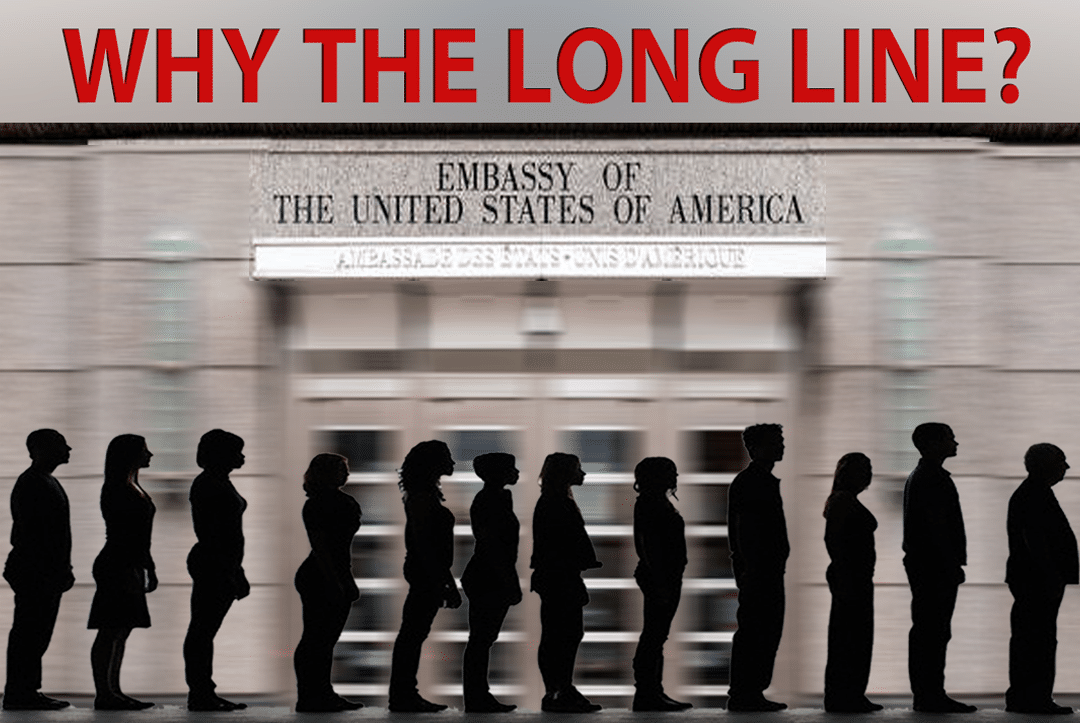Marriage between a US citizen to a non-US citizen fiancée is a significant immigration matter. Fortunately, US immigration law allows US citizens to sponsor a foreign-citizen fiancée under the K-1 visa category. The sponsor may also include any of the fiancée’s children in the petition. Only adult US citizens may file a petition, though. However, both the petitioner and the person he is sponsoring must meet requirements set by US immigration authorities.
Is the K-1 US fiancee visa not for you? Read how you could apply for a US tourist visa, instead.
Essential Conditions for a Successful US Fiancee Visa Petition.
From being a fiancée to becoming a permanent resident is a long process. In 2019, the State Department issued over 41,000 K-1 visas at US Embassies worldwide. These applicants met the basic requirements for the visa. Whether they continue to follow protocol on their arrival in the US will determine if they will gain permanent resident status in a few years.
Marriage and K-1 Fiancée Visa fraud is a big concern for the US government. Hence, the sponsoring US citizen and the foreign-citizen fiancée should answer the question, “Are they free to marry?” If the answer is no, you should seek legal help on terminating a previous marriage.
Once the US citizen and the fiancée have no legal impediments, the next question is if the relationship is genuine. That question will be an ongoing concern, while the non-US citizen fiancée is not yet a lawful permanent resident. If you are the beneficiary of a US fiancee visa petition, you must marry within 90 days of your arrival in the US.
Within two years before filing the petition, the US citizen and his fiancée must have met in person. There have been some exceptions to this condition, though. Immigrant Visa Center has already filed successful waivers on this. If you and your fiancée have not met yet, contact our office to see if we could assist you with this.
For a successful K-1 US fiancee visa petition, the US citizen must have the income required to support the fiancée she has applied for permanent residency.
And finally, the petitioner and the foreign-citizen fiancée must meet health and security checks. Otherwise, the fiancée may be ineligible for the K-1 visa. One example of ineligibility is if the foreign-citizen fiancée has overstayed in the US.
What happens after the US Embassy issues the K-1 visa
When you enter the US on a K-1 visa, you must marry the same US Citizen who filed the petition. You may only remain in the US. If you end marry someone else, US immigration may direct you and your minor children to leave the US.
There is a strict timeline you must observe. First, you must travel within the validity dates specified on your K-1 visa. The visa may be valid for up to six months. If you don’t travel within the specified period, you may have to apply for another visa. The worst-case scenario is that your US citizen fiancé may have to file a second fiancée visa petition.
And second, you should marry your fiancé within 90 days of your arrival. You must, thus, begin planning your wedding once the US Embassy approves your application.
You may apply for a social security card once you arrive. But if you want it to reflect your married name, get married first before applying for a social security number. Remember though that having a social security number does not mean you can work. You must have employment authorization for your work to be legal.
If you want to work when you arrive, you may apply for employment authorization. Your permit to work, though, is contingent on the validity of your K-1 visa. By that time, the application is approved, you should be married. Therefore, the authorization will be of little value to you then.
Once you are married.
The USCIS will issue your conditional permanent resident status once it approves your initial application to adjust status. You must file to remove the conditions of your residency within two years of the approval date. If you don’t, you may face complications with your immigration status.
There’s good news provided you are still married to your petitioner. You don’t have to wait five years before filing for citizenship. You may apply for US citizenship two years and nine months after the USCIS approved your initial adjustment of status.
Do you need more information about the US fiancee visa category? Share your inquiry with us. Complete the form below and wait for an IVC associate to contact you.







